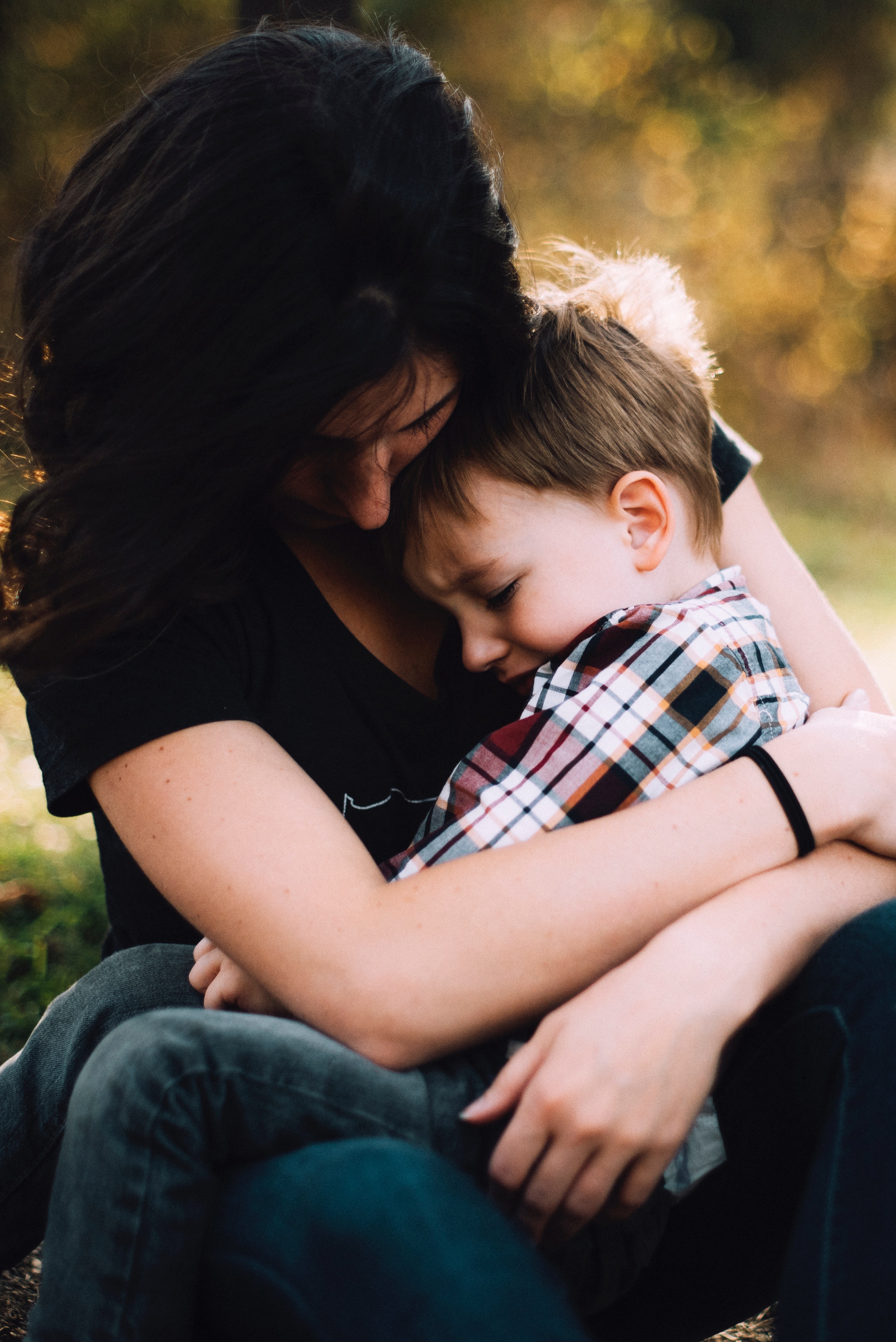Tantrums are probably the number one thing that parents want to talk to me about. No matter what parents of toddlers come to see me about, we always end up finding our way to the topic of tantrums!
Managing tantrums can be incredibly stressful for caregivers. One minute you are having a great time playing with your toddler, the next minute there are blocks flying across the room while your toddler is screaming and crying because he wanted to put the blue block on the tower! You dive into reaction-mode! Your mind starts spinning as you try to balance understanding what happened, teaching him not to throw, keeping your younger kid out of the block cross-fire, holding back your tears, second-guessing your response, yelling and then immediately wishing you hadn’t yelled! Fewf! That was tiring just typing it!
Okay, take a breath. We got this.
So what does research tell us about tantrums? Well, let’s start by breaking down what tantrums really are.
What are Tantrums?
Okay, so right off the bat I have to tell you that I really don’t like the word ‘Tantrum’. I’ve used it here because it is the word most people connect with – but, in my opinion, the word tantrum makes it sound like something the child is doing that is wrong or bad or shouldn’t be happening. And of course, some of the behaviours that go along with a tantrum are things that could harm others and we want to teach children not to do – like throw, hit, bite, etc., but when we get down to it, tantrums are expressions of emotion. And there is nothing bad or wrong about emotions.
So, when talking about tantrums, I prefer to use the term ’emotional outburst’ or eventually when we figure out the feeling the child has during the emotional outburst, we can label it by that emotion and the behaviour that follows – for example, “When Johnny is angry he yells, cries, and throws his toys.” I find this invites a lot more understanding and compassion than “Johnny is having a tantrum again.” And this leads us nicely into our next point…
Separating the Emotion from the Behaviour
This is the first step in responding to tantrums: Identify the Emotion.
 What was Johnny feeling when he didn’t get to put the blue block on the tower? Disappointed? Angry? Sad? (probably not happy!). We have to separate the emotion from the behaviour to understand what is happening and figure out how to respond. If we are only responding to the throwing and kicking, we are missing what is really happening.
What was Johnny feeling when he didn’t get to put the blue block on the tower? Disappointed? Angry? Sad? (probably not happy!). We have to separate the emotion from the behaviour to understand what is happening and figure out how to respond. If we are only responding to the throwing and kicking, we are missing what is really happening.
And what is really happening is that Johnny is Angry. The behaviours are just symptoms of his anger – and if we just treat the symptoms, we aren’t solving the problem. It would be like trying to hang a heavy picture with a tiny nail. No matter how many times we put it back up after it falls, it will just keep falling over and over again until we solve the real problem and buy some bigger nails!
So let’s buy some bigger nails!! What is your child feeling when he is throwing, kicking, hitting, or rolling on the ground crying? I know a lot of you are thinking – “ummm…okay, so he didn’t get to put the blue block on the tower, what is the big deal? Can’t he just put the red block on instead of having this hour-long meltdown?!?” And this leads us to our final point of step one….
Empathy
As adults, we may never be able to get why something is SO important to a toddler. We may never care as much as they do about drinking from the red cup, or wearing blue jeans instead of black. But we don’t have to get the ‘why’ to empathize with the emotion. Even though I may not care if I get to go to the playground, I can remember a time when I felt disappointed and empathize with that feeling.
Empathy is the ability to understand someone else’s perspective, even if you have never experienced what they have. I may not care which toy I get to play with, but I understand anger, sadness, and frustration. And this is how I can connect with a child who is experiencing one of these emotions.
Of course, we can’t talk about Empathy without Brene Brown! Below is her video on Empathy – a great, quick watch to help understand why Empathy is so powerful.
So, next time your child has an emotional outburst, use your best Empathy skills to try to notice what feeling he is experiencing. This won’t magically solve everything, and don’t worry, we will be tackling how to respond to these feelings AND the behaviours that go along with them in the weeks to come. But for now, just notice, and think about how you would like someone to respond to you if you were feeling the same way.
Until next time,
Meg
One response
“But for now, just notice, and think about how you would like someone to respond to you if you were feeling the same way.” – great line, immediately takes me to an empathetic and more considerate place